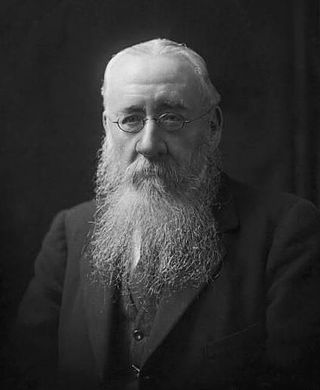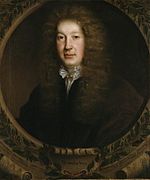Related Research Articles
Free verse is an open form of poetry, which in its modern form arose through the French vers libre form. It does not use consistent meter patterns, rhyme, or any musical pattern. It thus tends to follow the rhythm of natural speech.
Hexameter is a metrical line of verses consisting of six feet. It was the standard epic metre in classical Greek and Latin literature, such as in the Iliad, Odyssey and Aeneid. Its use in other genres of composition include Horace's satires, Ovid's Metamorphoses, and the Hymns of Orpheus. According to Greek mythology, hexameter was invented by Phemonoe, daughter of Apollo and the first Pythia of Delphi.

An ode is a type of lyric poetry. Odes are elaborately structured poems praising or glorifying an event or individual, describing nature intellectually as well as emotionally. A classic ode is structured in three major parts: the strophe, the antistrophe, and the epode. Different forms such as the homostrophic ode and the irregular ode also enter.

Poetry, also called verse, is a form of literature that uses aesthetic and often rhythmic qualities of language − such as phonaesthetics, sound symbolism, and metre − to evoke meanings in addition to, or in place of, a prosaic ostensible meaning. A poem is a literary composition, written by a poet, using this principle.
A tercet is composed of three lines of poetry, forming a stanza or a complete poem.

John Dryden was an English poet, literary critic, translator, and playwright who in 1668 was appointed England's first Poet Laureate.

George Edward Bateman Saintsbury, FBA, was an English critic, literary historian, editor, teacher, and wine connoisseur. He is regarded as a highly influential critic of the late 19th and early 20th century.

Abraham Cowley was an English poet and essayist born in the City of London late in 1618. He was one of the leading English poets of the 17th century, with 14 printings of his Works published between 1668 and 1721.
Shloka or śloka (Sanskrit: श्लोक śloka, from the root śru, lit. 'hear' in a broader sense, according to Monier-Williams's dictionary, is "any verse or stanza; a proverb, saying"; but in particular it refers to the 32-line verse, derived from the Vedic anuṣṭubh metre, used in the Bhagavad Gita and many other works of classical Sanskrit literature.
Thomas Rymer was an English poet, critic, antiquary and historian. His lasting contribution was to compile and publish 16 volumes of the first edition of Foedera, a work in 20 volumes conveying agreements between The Crown of England and foreign powers since 1101. He held the office of English Historiographer Royal from 1692 to 1714. He is credited with coining the phrase "poetic justice" in The Tragedies of the Last Age Consider'd (1678).

A threnody is a wailing ode, song, hymn or poem of mourning composed or performed as a memorial to a dead person. The term originates from the Greek word θρηνῳδία (threnoidia), from θρῆνος and ᾠδή, the latter ultimately from the Proto-Indo-European root *h₂weyd- that is also the precursor of such words as "ode", "tragedy", "comedy", "parody", "melody" and "rhapsody".

Anne Killigrew (1660–1685) was an English poet and painter, described by contemporaries as "A Grace for beauty, and a Muse for wit." Born in London, she and her family were active in literary and court circles. Killigrew's poems were circulated in manuscript and collected and published posthumously in 1686 after she died from smallpox at age 25. They have been reprinted several times by modern scholars, most recently and thoroughly by Margaret J. M. Ezell.
Pindarics was a term for a class of loose and irregular odes greatly in fashion in England during the close of the 17th and the beginning of the 18th century. Abraham Cowley, who published fifteen Pindarique Odes in 1656, was the poet most identified with the form though many others had composed irregular verses before him. The term is derived from the name of a Greek archaic poet, Pindar, but is based on a misconception since Pindar's odes were in fact very formal, obeying a triadic structure, in which the form of the first stanza (strophe) was repeated in the second stanza (antistrophe), followed by a third stanza (epode) that introduced variations but whose form was repeated by other epodes in subsequent triads. Cowley's Resurrection, which was considered in the 17th century to be a model of the 'pindaric' style, is a formless poem of sixty-four lines, arbitrarily divided, not into triads, but into four stanzas of unequal volume and structure; the lines which form these stanzas are of lengths varying from three feet to seven feet, with rhymes repeated in no order. It was the looseness of these 'pindarics' that appealed to many poets at the close of the 17th century, including John Dryden, Aphra Behn, and Alexander Pope, and many lesser poets, such as John Oldham, Thomas Otway, Thomas Sprat, John Hughes and Thomas Flatman.
Nationality words link to articles with information on the nation's poetry or literature.
Decasyllabic quatrain is a poetic form in which each stanza consists of four lines of ten syllables each, usually with a rhyme scheme of AABB or ABAB. Examples of the decasyllabic quatrain in heroic couplets appear in some of the earliest texts in the English language, as Geoffrey Chaucer created the heroic couplet and used it in The Canterbury Tales. The alternating form came to prominence in late 16th-century English poetry and became fashionable in the 17th century when it appeared in heroic poems by William Davenant and John Dryden. In the 18th century famous poets such as Thomas Gray continued to use the form in works such as "Elegy Written in a Country Churchyard". Shakespearean Sonnets, comprising 3 quatrains of iambic pentameter followed by a final couplet, as well as later poems in blank verse have displayed the various uses of the decasyllabic quatrain throughout the history of English Poetry.
Nationality words link to articles with information on the nation's poetry or literature.
Nationality words link to articles with information on the nation's poetry or literature.
Nationality words link to articles with information on the nation's poetry or literature.

The Hind and the Panther: A Poem, in Three Parts (1687) is an allegory in heroic couplets by John Dryden. At some 2600 lines it is much the longest of Dryden's poems, translations excepted, and perhaps the most controversial. The critic Margaret Doody has called it "the great, the undeniable, sui generis poem of the Restoration era…It is its own kind of poem, it cannot be repeated ."

King Alisaunder or Kyng Alisaunder is a Middle English romance or romantic epic in 4017 octosyllabic couplets. It tells the story of Alexander the Great's career from his youth, through his successful campaigns against the Persian king Darius and other adversaries, his discovery of the wonders of the East, and his untimely death. George Saintsbury described King Alisaunder as "one of the most spirited of the romances", and W. R. J. Barron wrote of its "shrewd mixture of entertainment and edification made appetizing by literary and stylistic devices of unexpected subtlety."
References
- ↑ David Hopkins, "Editing, Authenticity, and Translation: Re-Presenting Dryden's Poetry in 2000," in John Dryden: Tercentenary Essays (Oxford University Press, 2000), p. 342.
- ↑ George Sherburne and Donald F. Bond, "The Spirit of the Restoration" in Literary History of England: The Restoration and the Eighteenth Century (Routledge, 2004, reprinted from the second edition of 1967), p. 699.
- ↑ Cox, Michael, editor, The Concise Oxford Chronology of English Literature, Oxford University Press, 2004, ISBN 0-19-860634-6
- ↑ The Oxford Dictionary of Quotations (Oxford University Press, 1999, corrected edition 2001), p. 282.
- ↑ Dryden, John (1913). Sargeaunt, John (ed.). The Poems of John Dryden. Oxford University Press. p. 111.
- ↑ Sherburne and Bond, "The Spirit of the Restoration," p. 699.
- ↑ A.W. Ward, "Dryden," in Cambridge History of English Literature (Cambridge University Press, 1968, reprinted from the first edition of 1911), p. 44.
- ↑ George Saintsbury, Dryden (Harper: New York and London, 1902), p. 94 online.
- ↑ Hopkins, "Editing, Authenticity, and Translation," pp. 343–344.
- ↑ Paul Hammond, The Making of Restoration Poetry (D.S. Brewer, 2006), p. 150.
